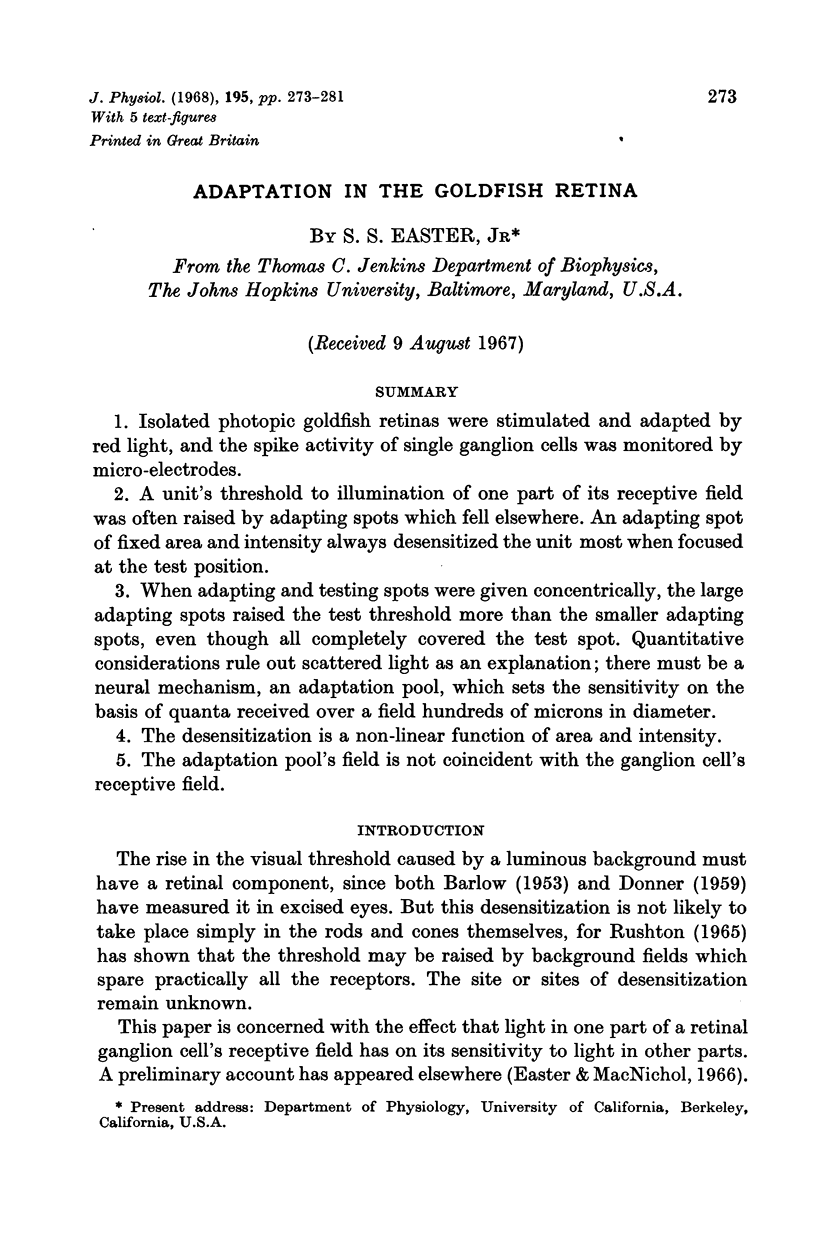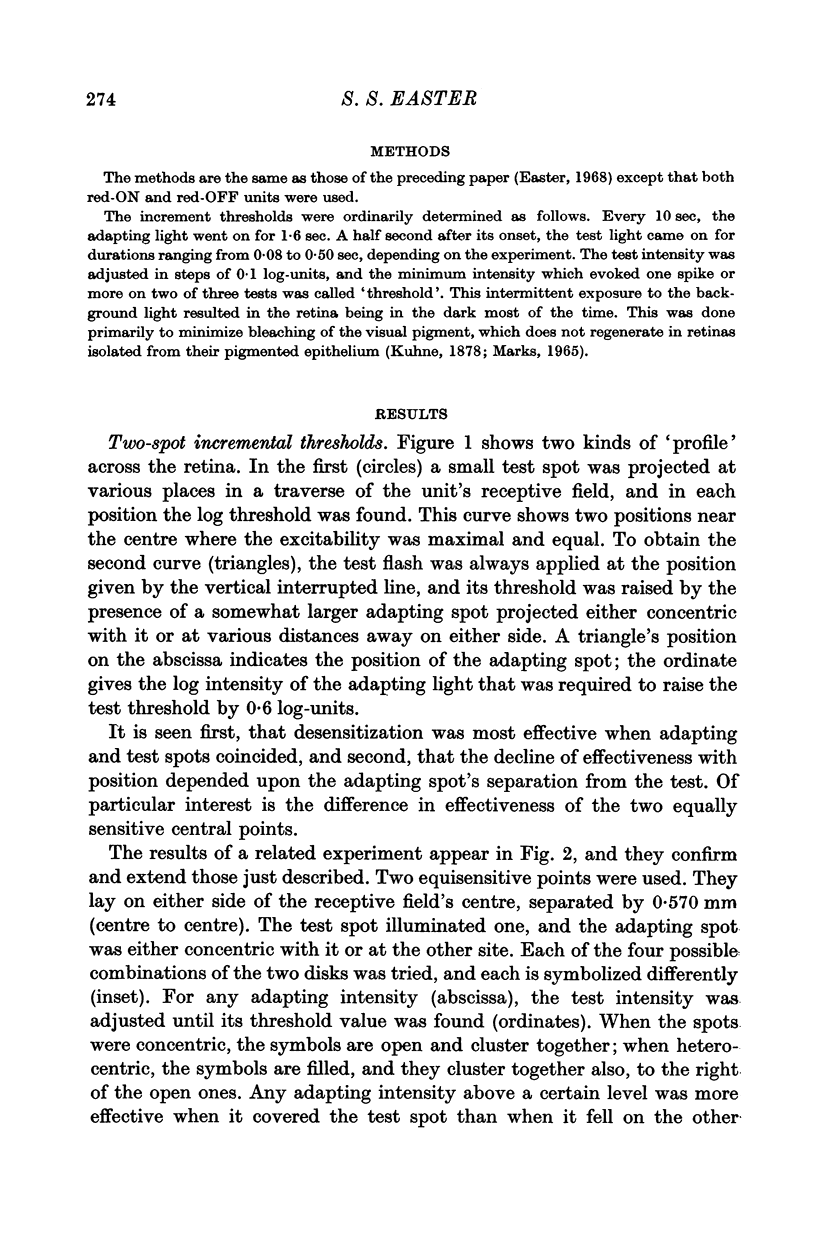Abstract
1. Isolated photopic goldfish retinas were stimulated and adapted by red light, and the spike activity of single ganglion cells was monitored by micro-electrodes.
2. A unit's threshold to illumination of one part of its receptive field was often raised by adapting spots which fell elsewhere. An adapting spot of fixed area and intensity always desensitized the unit most when focused at the test position.
3. When adapting and testing spots were given concentrically, the large adapting spots raised the test threshold more than the smaller adapting spots, even though all completely covered the test spot. Quantitative considerations rule out scattered light as an explanation; there must be a neural mechanism, an adaptation pool, which sets the sensitivity on the basis of quanta received over a field hundreds of microns in diameter.
4. The desensitization is a non-linear function of area and intensity.
5. The adaptation pool's field is not coincident with the ganglion cell's receptive field.
Full text
PDF








Selected References
These references are in PubMed. This may not be the complete list of references from this article.
- BARLOW H. B. Summation and inhibition in the frog's retina. J Physiol. 1953 Jan;119(1):69–88. doi: 10.1113/jphysiol.1953.sp004829. [DOI] [PMC free article] [PubMed] [Google Scholar]
- DONNER K. O. The effect of a coloured adapting field on the spectral sensitivity of frog retinal elements. J Physiol. 1959 Dec;149:318–326. doi: 10.1113/jphysiol.1959.sp006342. [DOI] [PMC free article] [PubMed] [Google Scholar]
- Dowling J. E. The site of visual adaptation. Science. 1967 Jan 20;155(3760):273–279. doi: 10.1126/science.155.3760.273. [DOI] [PubMed] [Google Scholar]
- Easter S. S., Jr Excitation in the goldfish retina: evidence for a non-linear intensity code. J Physiol. 1968 Mar;195(2):253–271. doi: 10.1113/jphysiol.1968.sp008457. [DOI] [PMC free article] [PubMed] [Google Scholar]
- LIPETZ L. E. A mechanism of light adaptation. Science. 1961 Mar 3;133(3453):639–640. doi: 10.1126/science.133.3453.639. [DOI] [PubMed] [Google Scholar]
- MARKS W. B. VISUAL PIGMENTS OF SINGLE GOLDFISH CONES. J Physiol. 1965 May;178:14–32. doi: 10.1113/jphysiol.1965.sp007611. [DOI] [PMC free article] [PubMed] [Google Scholar]
- RUSHTON W. A. THE SENSITIVITY OF RODS UNDER ILLUMINATION. J Physiol. 1965 May;178:141–160. doi: 10.1113/jphysiol.1965.sp007620. [DOI] [PMC free article] [PubMed] [Google Scholar]


